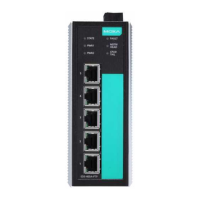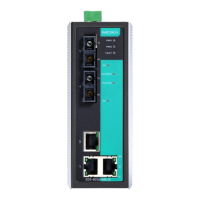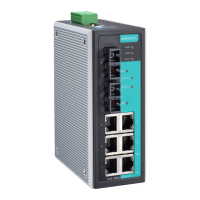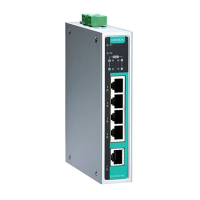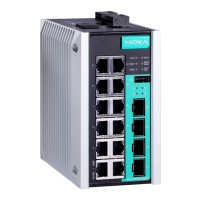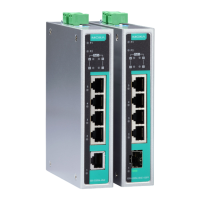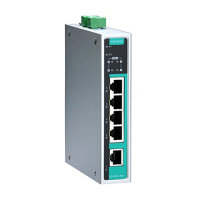PT-7728 User’s Manual Featured Functions
3-21
SNMP Inform Mode
SNMPv2 provides an inform mechanism. When an inform message is sent from the SNMP agent
to the NMS, the receiver sends a response to the sender acknowledging that the event was received.
This behavior is similar to get and set requests. If the SNMP agent does not receive a response
from the NMS for a period of time, the agent will resend the trap to the NMS agent. The maximum
timeout is 300 sec. (default is 1 sec.), and the maximum number of retries is 99 (default is 1 time).
When the SNMP agent receives acknowledgement from the NMS, it will stop resending the
inform messages.
Private MIB information
Switch Object ID
Setting Description Factory Default
8691.7.13
This indicates the PT-7728’s enterprise
value.
Fixed
NOTE: The Switch Object ID cannot be changed.
Using Communication Redundancy
Communication redundancy on your network helps protect critical links against failure, protects
against network loops, and keeps network downtime at a minimum.
Communication redundancy functions allow the user to set up redundant loops in the network to
provide a backup data transmission route in the event that a cable is inadvertently disconnected or
damaged. This is a particularly important feature for industrial applications, since it could take
several minutes to locate the disconnected or severed cable. For example, if the PT-7728 is used as
a key communications component of a production line, several minutes of downtime can result in
a big loss in production and revenue. The PT-7728 supports three different protocols for
communication redundancy—Rapid Spanning Tree Protocol (IEEE-802.1w) and Turbo Ring,
and Turbo Ring V2 , and Turbo Chain.
When configuring a redundant ring, all switches on the same ring must be configured using the
same redundancy protocol. You cannot mix the Turbo Ring, Turbo Ring V2, and STP/RSTP
protocols within a ring. The following table lists the key differences between each feature. Use this
information to evaluate each the benefits of each, and then determine which features are most
suitable for your network.
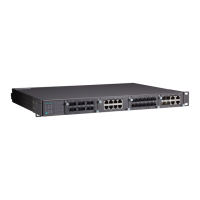
